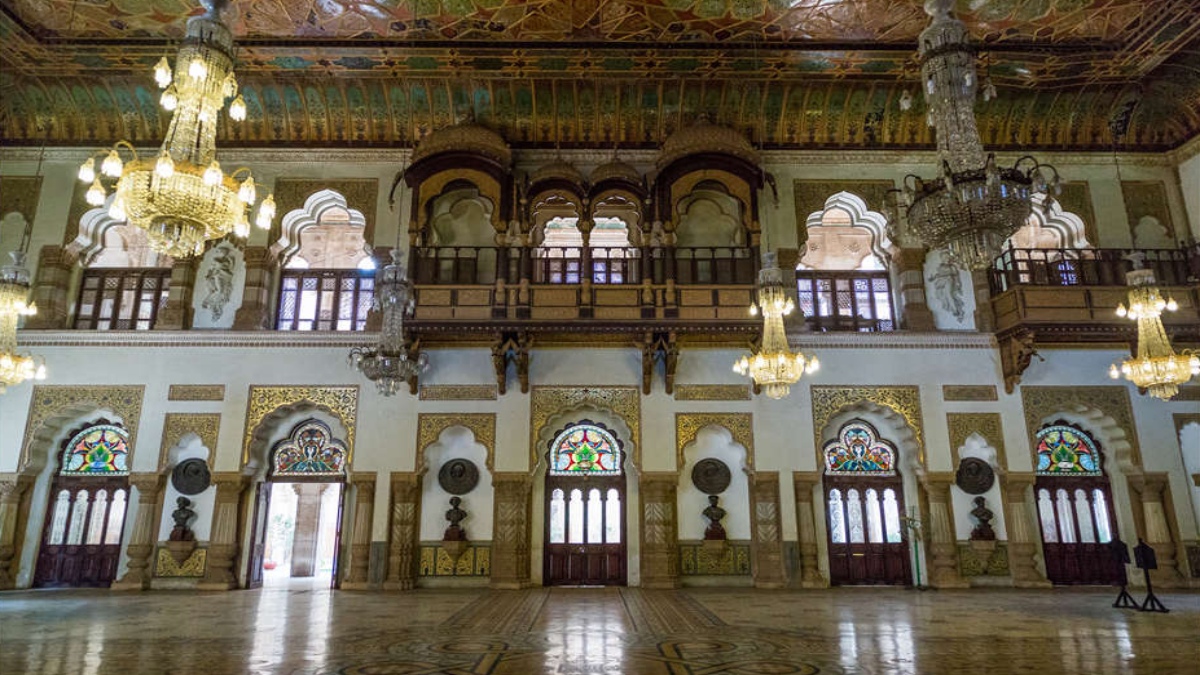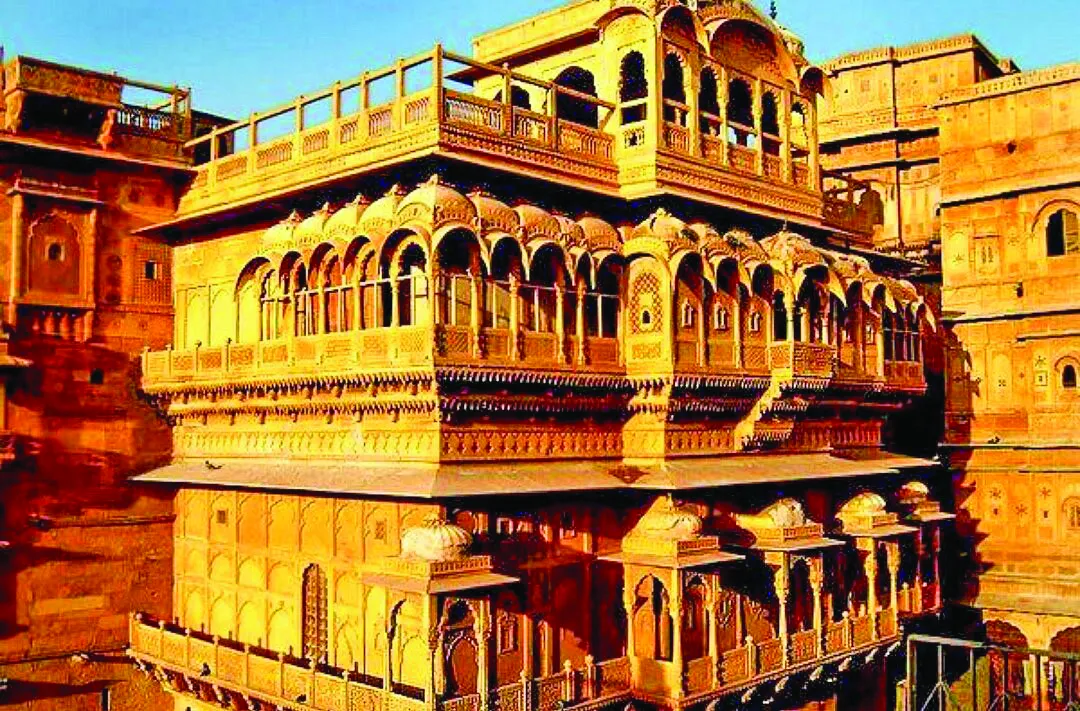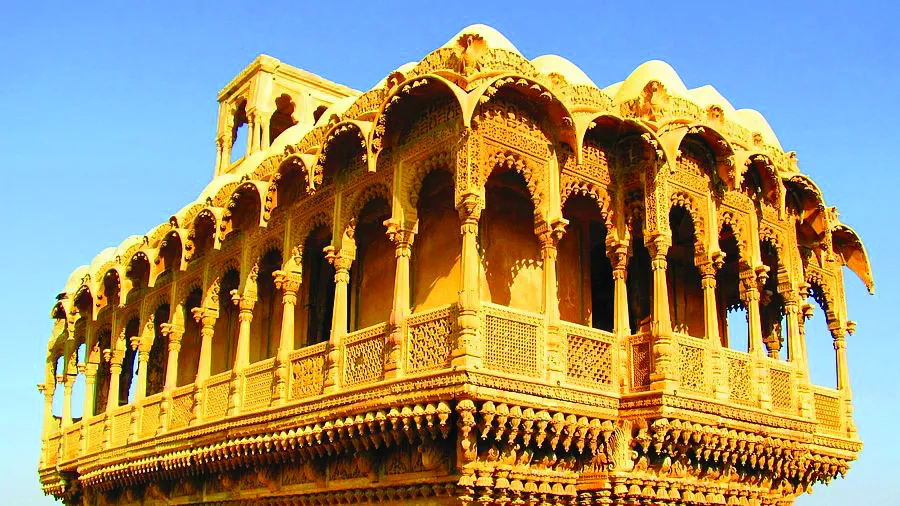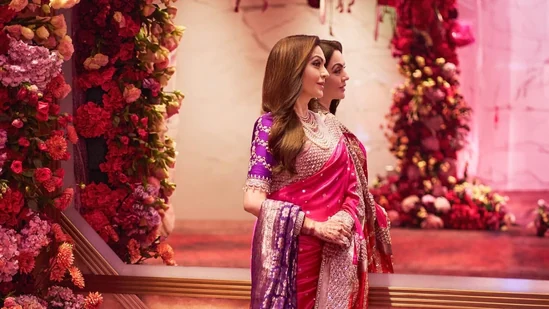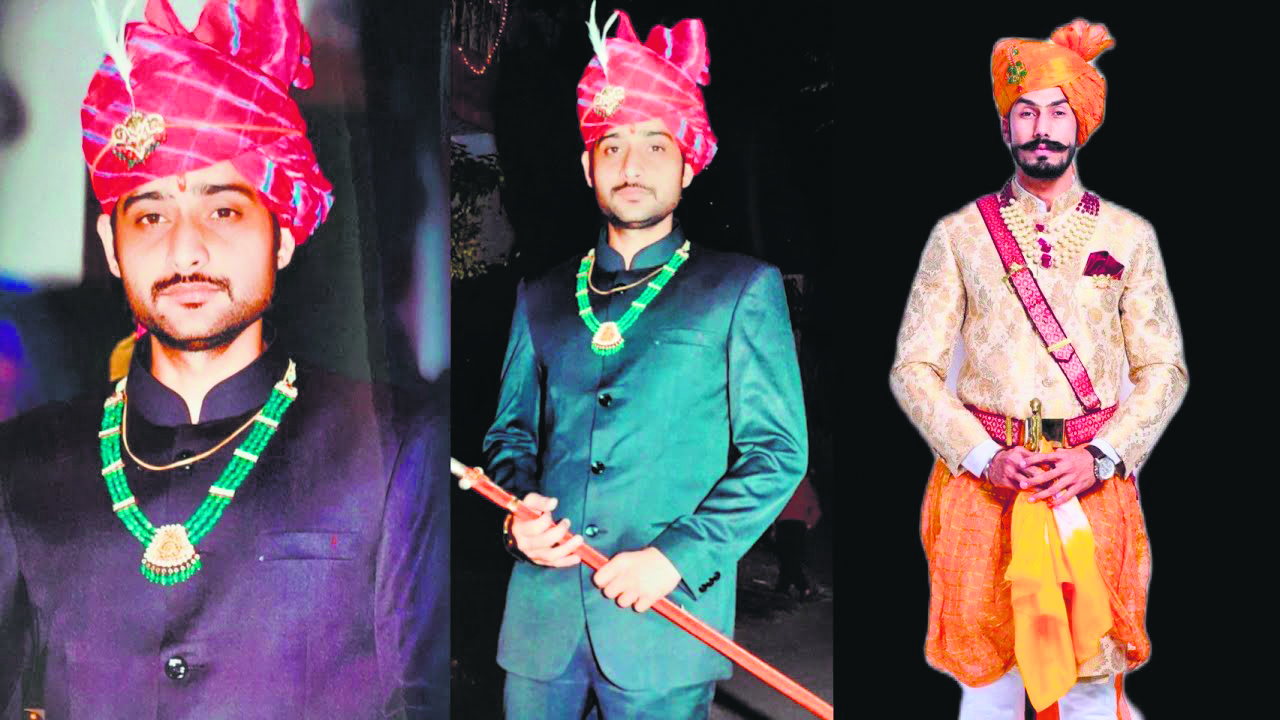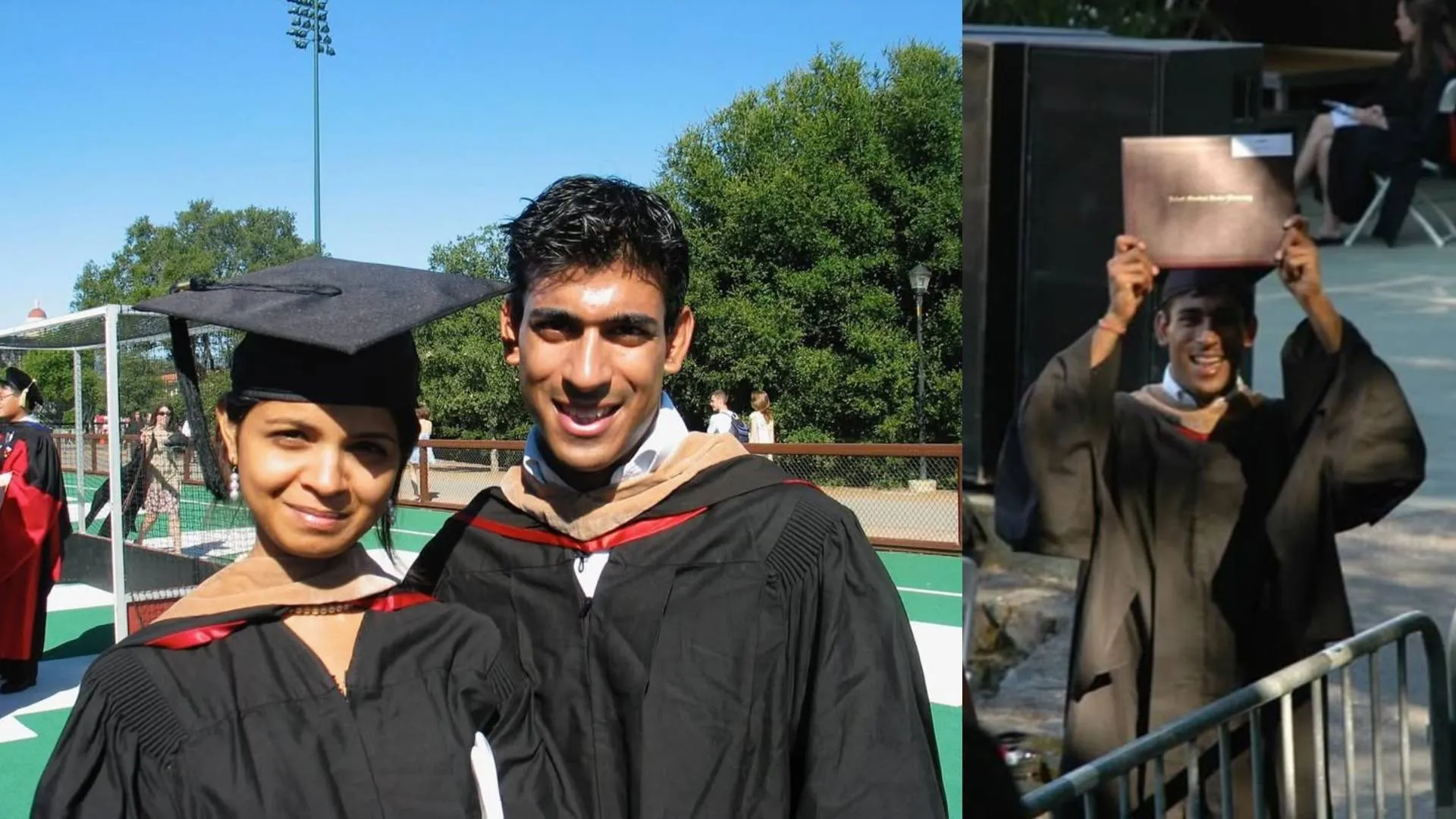The loftiness of expansive forts, the impermeable columns in palaces that still hide within them stories of a distant past, the glimmer of luminescent chandeliers, jewels that cradled the soft bosoms of regal high-priestesses and the luxuries of custom-made four-wheeled beauties are just the tip of the iceberg that is the Maharaja story.
The erstwhile rulers of the princely states of India made new definitions in living escalated and extravagant lifestyles by the day. The Maharaja era has not just left deposits of amusing stories of a time gone by, but has bequeathed legacies upon us that today show windows to an Indian past which was luxurious, magnificent and incomparable!
Whatever the criticism of the decadent lifestyle of the Maharajas, none can deny that wittingly or unwittingly they created masterpieces in art and architecture, giving artists and art a unique place. So exclusive was the craftsmanship of those times that any attempt to copy has been largely unsuccessful, for the creations of yore cannot be matched or replicated. Contrary to criticism for their opulence, many erstwhile rulers laid emphasis on art, architecture and craft, supporting communities of artists and craftsmen with their continuous patronage.
Many kingdoms prospered with art, textiles and embroidery being encouraged within kingdoms and trade routes opened up giving merchants and artists new opportunities and accessibility.
Maharaja Umaid Singh of Jodhpur, a great patron of art and architecture, came up with the most ingenious idea of providing employment to locals in the middle of a famine. While Jodhpur was struggling with the monsoons failing consecutively, the Maharaja decided to build the Umaid Bhawan Palace, providing employment to over 3,000 local people. The building stands as the first palace built in Art Deco style in the 1920s.
While art and artists flourished, providing employment to locals, it is the personal interests of princely rulers in creating stupendous examples of material wealth that led to the making of some of the most beautiful palaces, forts, temples, paintings, costumes, chandeliers and jewels.
Not only were some of these Indian rulers encouraging and endorsing art in all forms within their kingdoms, they were also setting new standards internationally and employing fresh architects of creativity to quench their mammoth artistic desires, which often came hand-in-hand with a zealousness to possess the finest quality products ever made available for mankind. A good example of the erstwhile states sponsoring international artists is again Jodhpur’s Umaid Bhawan Palace. Polish artist Stefan Norblin was commissioned by the Jodhpurs to create murals and portraits of the family apart from interior-designing the palace.
Archibald Herman Muller, an artist of German origin, received the patronage of the royal houses of Bikaner, Nawanagar, Jaipur and Jodhpur. He painted prolifically in these states, having started in Bikaner in 1922 and then moving on to become a state-sponsored artist for Jodhpur where he eventually died in 1960. Some of his depictions of the Mahabharata and Ramayana show him as an artist of great skill who never compromised on quality.
In fact, his patrons encouraged him to retain his own belief in art rather than influencing his creativity by imposing what they wanted, as on an occasion the painter denied selling his work to a client who wanted him to make changes.
While Muller left lasting impressions in Bikaner, local artist Ruknuddin and later his son Shahadin produced the best miniature paintings under the patronage of the Bikaners. Similarly, in Jaipur, Maharaja Sawai Man Singh II set up 36 karkhanas (departments) which catered to different aspects, including music, armory as well as literature (through the pothikhana karkhana or library).
Says Diya Kumari of Jaipur, “My father realised the importance of preserving whatever was left of the karkhanas. We had lost many of them over time and fortunately we have been able to display 10 of these left in the palace museum, all of which were revived by my father.”
Noted 19th century painter Raja Ravi Varma found patronage in Baroda where he lived for 14 years. The artist’s studio still remains in the Baroda palace. In fact, Sayajirao Gaekwad III was such a far-sighted man and a complete aesthete that when it came to promoting fine arts, he left no stone unturned. It helped that his wife, Maharani Chimna Bai I, a princess of Tanjore, had great knowledge of Bharatnatyam and brought a few Tanjore dancers to Baroda as part of her dowry.
The Tanjore dancers attained huge acclaim as performers in Baroda, which was gradually turning into a throbbing cultural centre, elevating art to a higher pedestal. From Ustad Moula Bux, Sayajirao’s court also produced gems like Ustad Inayat Khan and Ustad Faiyyaz Khan in music.
“Patronage of artists in state times had such a lasting impact that even now Baroda is considered the cultural capital of Gujarat. Generations of artists were supported and encouraged in Baroda and it still produces some of the best talent in art. I guess it stems from the fact that art has been around in every aspect of Baroda and people have grown up around it. Sculptor Felici made a dancing figure based on one of the Tanjore dancers who were not just looked upon as nautch girls but as performers of great repute,” says Radhika Raje, the daughter-in-law of the Baroda royal family who now looks after the palace museum and various family trusts.
Other acclaimed artists who enjoyed royal patronage in Baroda include Nandlal Bose and Phanindranath Bose.
Whether it was a piece of garment, quilt or even furniture – the emphasis in the princely times was on presenting bespoke pieces. Some fine examples of the Maharajas’ personal collections are still available with their families and the sheer luxury of artistry seen in even utilitarian tools is astonishing.
Take, for example, the Louis Vuitton luggage that many families commissioned with personal inscriptions on it. LV still prides itself over personal collections of the Kashmir royal family which was on display in their Delhi store sometime back. The Maharajas also carried the most ornate swords and weapons, many of which are showcased on ceremonial occasions even today.
Indian rulers were creating a new movement in hedonism that was stylized and unparalleled.
Even in fashion the trends set by the men and women of those times have been so amusingly niche that any attempt to replicate them may not elicit similar results, they were so eccentric and fascinatingly idiosyncratic. For instance, there was the Maharani of Cooch Behar, Indira Devi, a woman who was celebrated in the high societies of Paris and London as one of the most photographed faces. Indira Devi, a princess of Baroda, who later married the prince of Cooch Behar, became more conspicuous than she already was when she started carrying a pet turtle to evening soirees. Not only did it bewilder onlookers for the sheer choice of her evening companion, but the turtle dazzled them with its bejeweled shell comprising precious gemstones.
Whimsical as it appeared, the erstwhile royals were pushing the boundaries in art and fashion, forcing artists to think out of the box and were themselves creating trends that till date remain unrivalled.
The princely states were also making history on the world stage where the largest international commissions were made. The Patiala necklace made for Maharaja Bhupinder Singh of Patiala by Cartier remains a priceless piece of history till date. In 1925 when the Maharaja visited Cartier in Paris he came back after having placed an order for the world’s largest necklace consisting of 2,930 diamonds!
Even in architecture, the sheer luxury of size was setting new standards. The Gwalior palace which boasts of having the two largest chandeliers in the world has an interesting story. Two elephants were pulled up on a pulley to see if the ceiling could take the weight of those chandeliers. Similarly, Baroda’s Lakshmi Vilas Palace built in the Indo-Saracenic style by Maharaja Sayajirao Gaekwad III in 1890 had amenities such as elevators and intercoms in those days and till date, the residents of the palace claim, they have not had to change any plumbing! It remains the largest private residence ever built – the Buckingham Palace is only four times smaller in size compared to this wide-spread building which is now occupied by Sayajirao’s descendants.
The lifestyle of the Maharajas and their various passions have been documented through various exhibitions that have taken place globally. The pictures that appeared in studio La Fayette’s exhibition in the capital a few years ago portrayed the charismatic and opulent existence of the Maharajas reflecting how the Maharaja culture is an important aspect of history that shaped India’s future – especially in the fields of art, architecture, music and dance. Sepia-toned photos of regal Maharajas and Maharanis depicted imperial influences – they were amongst the first to commission portrait artists and later with the advent of photography they became avant-garde leaders in documenting their own lifestyles. From hunting scenes to coronations, the Maharajas enjoyed documenting their lives through photographs and paintings and inadvertently promoted both photography and painting as fine art.
Some noteworthy contributions were made by British photographer Dorothy Wilding and artists such as Alfred Jonniaux, whose portrait of Indira Devi in a white diaphanous saree remains amongst the most circulated photographs of that era. Among Indian artists, Raja Ravi Varma, who otherwise specialized in painting scenes from Indian mythology, made portraits of the entire royal family of Baroda.
The Maharajas indeed carefully looked into encouraging artistic idioms and their larger-than- life image of the heightened self, bedecked with ornaments and royal protocol, helped create fashion into an appreciated and admired art.
Their decadence, paradoxically, also encouraged the most luxurious presentations in their homes, surroundings and kitchens. The Maharaja lifestyle depicted esoteric tastes despite the obvious ostentation and each went ahead in outdoing the other in creating records of sorts.
It wasn’t competition that made princely rulers outdo the others. But in royal protocol much of it was based on idealized concepts of hospitality and generosity. Thrift was clearly a vice!
The Rampurs, known for their hospitality and lavish spreads, went out of their way to create unique feasts. For special occasions, they served pulao for which rice was carved out to resemble a pineapple before it was cooked.
The court culture added a flourish to entertainment which was carried out in the most beauteous surroundings. The need to spell their majesty in the most outstanding manner led to the creation of some of the finest durbar halls including those in Jaipur,
Jodhpur, Baroda, Mysore, Gwalior and Hyderabad still stand as intimidating witnesses to a glorious past. These were often accentuated by murals such as those depicting seasons, especially the monsoon, and clouds, that are common in the palaces of Rajasthan which received less rainfall. Each royal court had its own belief in patronizing royal art, craft and music. In fact, the great gharana system in music started from the courts of India, promoting generations of musicians. With the decline of princely India, musicians moved away from their former princely states to urban hubs, but carried the gharana tag which served as their distinct identity. Royal patronage produced some of India’s finest musicians such as Bismillah Khan who first found encouragement from the Maharaja of Darbhanga in Bihar where his maternal uncle played the shehnai.
The Nawab of Rampur, Raza Ali Khan, was such a lover of music that not only did he play the khartal himself, he invited musicians from all over India to his court and patronized the likes of Sitara Devi and Begum Akhtar. His granddaughter, Naghat Khan, says, “My grandfather was a pure lover of music. He did not just promote music as a ruler but was passionate and understood every aspect of it.”
The fall of the Mughals in the 18th century and the evolution of the princely states of India saw amongst many transitions, excesses, extravagances as well as the Maharaja’s whimsical journeys that today stand as a testament to royal patronage of art, architecture as well as music and dance.
The princely states took over from where the Mughals left. They helped in patronizing art and artists and gave it a new dimension under them as Mughal influences started diminishing.
The now famous miniature paintings of Rajasthan found a new lease of life under the new patronage of the Maharajas after the Mughal era declined. Princess Siddhi Kumari of Bikaner, who has been running the Prachina museum for the last 20 years, says, “Bikaner offered a very fluid environment for artists and with each successive ruler we saw art and architecture being encouraged and the streams evolved without any restrictions. The emphasis was on each form of artistic expression and not just a particular discipline.”
The Prachina museum has revived some old traditions with live demonstrations of art, as seen in European realism, all carried out by local artists. Today it supports fourth-generation craftsmen like Hanif Usta who work with camel hide, as well as carpenters who are skilled at making wooden carriages.
The opulence of princely India has faded with time. However, the rich stories still evoke a vibrant vision of an abundant and amusing bygone era. The past has turned into the present continuous as members of the erstwhile royal families are pitching a new place linking India’s vast art and craft traditions with the new world order.

